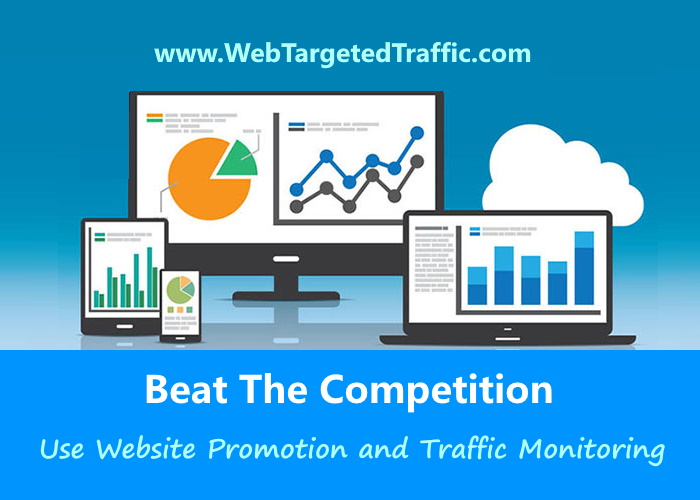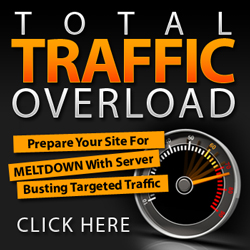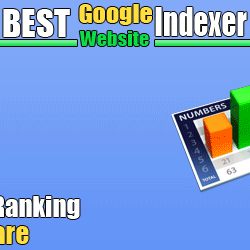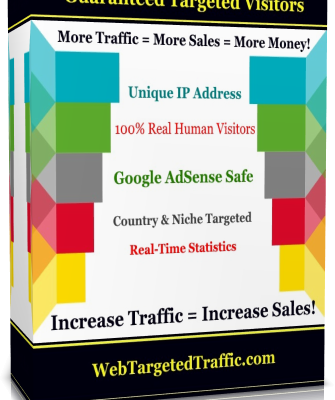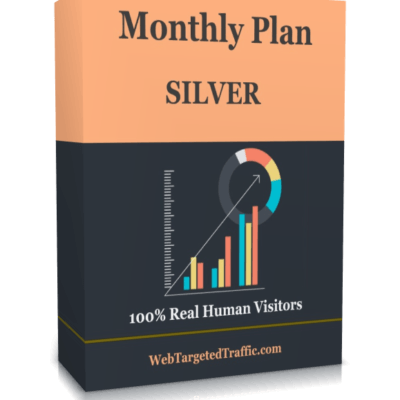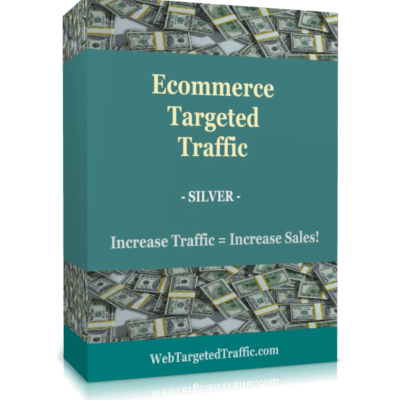Website traffic analysis will allow you to see whether your site is meeting your objectives, by measuring performance indicators.
But how to monitor your website traffic? There are plenty of powerful analysis tools out there. But what exactly should you be monitoring? What are the key stats you need to focus on if you’re going to make any sort of improvements to the way your site performs? Let’s take a look to how to check organic traffic of a website, and explore the most important reports you’ll want to be looking at.
Table of Contents
What Does Website Traffic Monitoring Mean?
Website traffic monitoring is the process of reviewing and analyzing website traffic for the purpose of evaluating the website’s user traffic and its overall performance.
It is done using the combination of manual and automated traffic monitoring techniques, with the intent to study, analyze and act on the website’s incoming and outgoing traffic.
How to promote a website on Google?
This is where the question arises, so how do you promote your site on Google? Well .. this is a big and long process that takes quite a bit of time, effort, and even money. But, it is certainly possible today to focus on a few topics that will allow your site to stand out and be in the leading and first search results.
First of all, we would like to make a slight note:
When people think of website promotion on Google, they usually think of being in the first result or first page. This is their goal, the goal they want to reach – but it is not fundamentally true.
Website promotion on Google is a means, but not a marketing goal. Therefore, you need to determine your goal first, or if you have several – then your goals.
For example, if you have an e-commerce store, your goal is to increase the number of sales on the site (at least, so we wonder). The means – promote your site on Google with the keywords of your products.
When we set goals, we also need to be based on defining a target audience and creating a marketing funnel.
1. Understanding the current situation
In order to reach our marketing goal, we need to understand the status quo. To do this, you need to base yourself on a few key parameters:
- What do we sell?
- Who are our customers?
- Who are our competitors?
- How new or well-known the brand and site are in the market.
- To what extent there is competition in the particular field in which the site or business operates.
- Some searches, results, and exposures get in Google.
By the way, if the site does not appear in Google, then it is very worthwhile to check it out, before moving on to the sections below.
2. Adjusting the structure of the site
We need to adapt our site structure, hierarchical, practical, and design, to the same goal we set earlier. If the goal is to sell products, then surely the site should allow consumers to make purchases on the site.
You can do this on other channels or social media pages, but this is less recommended.
It is important to also emphasize the menu, which should represent the main and important topics on the site. Which should stand out and those we are interested in highlighting. Like the categories, products, blog, contact, and so on.
3. User experience enhancements
In order for us to truly provide the information at the right time and in the right place. It is very important that our site is pleasant for the user to browse. This can be mainly expressed by the visibility and actions that can be performed on it, combined with the improvement of site performance for the purpose of accelerating the loading speed of the site.
The more convenient it is to perform actions on the site, the faster and easier it is to operate – the user will invest his time to meet his need, which is in line with our purpose.
4. Keyword and competitor research
Keyword research is an action that aims to allow us to identify all the words and search terms that users enter in the search engine, in order to find their information.
Admittedly, we can not think of all these things alone, so we need to rely on the products we sell or the services we offer. For example, if our product is a diamond ring, then the user can search for a “wedding diamond ring”, “which diamond rings exist”, “compare diamond ring prices” and so on.
You can do word research in several different tools, including Google itself, a keyword research tool in Google Ads, and more.
5. Matching the keywords to the content
If we sell a diamond ring, and we do not have a page called that, then we will have a very hard time getting for high results. The more popular the word, the greater the difficulty.
Therefore we need to make sure that we have information on the site based on them in words – all at our discretion and in accordance with our purpose.
For customers in the early stages of the marketing funnel, it is possible to create new content and it is: “How to choose an engagement ring”.
6. Links and PR
While website information can be professional, accurate, and integrated with keywords. We need to ensure that we can be ranked high even if our competitors do these things.
To do this, we must also promote our site externally, and not just internally within the site. This can be achieved through PR or website links.
Purchasing links is prohibited and violates Google’s guidelines. However, if you have a new product or a new site, and you get PR and referrals – this allowed and can benefit you. You can also add the site to free indexes, participate in forums or other communication channels.
7. Monitoring and improving performance
This is one of the most important parts of this whole article. We need to know that everything we have done before, indeed affects and helps us in promoting the site on Google.
It is highly advisable to use 2 necessary tools which are:
- Google Analytics – provides information and insights about the traffic of the site.
- Google Search Console – provides information about keywords, impressions, clicks, and other information on Google.
Here we need to compare and find out if we get more exposure, more ease, higher results with relevant keywords, and more. At the same time make sure that these keywords contribute to us in terms of marketing purpose – more customer inquiries, more calls, more sales on the site, and so on.
If not – it is very possible that there is a problem at some point in the process.
8. Implementation of advanced tools
So that we can make sure that the site is available, accessible, and adapted to different standards. We need to make sure we have the site:
- Robots.txt – allows us to set pages that do not need to be crawled and therefore do not display on Google.
- Meta noindex – which allows us to prevent indexing of a page in Google, which are irrelevant pages. Like the “I forgot my password” page.
- Meta description – allows us to display the description of the page, which will be displayed in the search engines.
- Canonical – which allows us to avoid duplication of pages in the eyes of Google.
- Permanent links – We need to make sure that the link of the page is simple and
How to track traffic on my website?
First things first, a look at some of the most popular website traffic analysis tools…
Google Analytics has to be the most well-known tool for web traffic monitoring. It’s free, simple to use and offers the added benefit of being able to link to all your other Google platforms, including Google Ads, and YouTube. So you get to connect with all the platforms across which your audience interacts with your brand.
Ahrefs is a web traffic analysis tool that allows you to analyse competitor traffic. With this platform, it’s possible to track the keywords that your competitors are ranking for in the search engines, and see the volumes of traffic that come with them. Being able to see the content that brings competitors the most traffic is a very valuable advantage, which can serve as a source for keyword research and help shape highly competitive organic SEO campaigns.
SEMrush works in a similar way to Ahrefs, although it is renowned as the best tool for keyword research and analysis, whilst Ahrefs is known more for its backlink monitoring capabilities. SEMrush allows you to analyse keywords and the volumes of traffic going to competitor sites, which reveals the overall competitiveness of the industry. You can also track the likes of traffic sources and unique visitors.
Which reports indicate how traffic arrived at a website, and how your site is performing generally?
If you’re just going to use a website traffic analysis tool to track the number of visitors landing on your site, you’re not really going to get much value out of it. Whilst you’ll get an insight into how certain pages are performing, it’s important to dig deeper into what’s really going on with your site and its traffic.
Certain metrics are used to analyze the raw statistics of website visitors, some of which are listed below.
If you’re running an SEO campaign, it’s important to know how to check organic traffic of a website. Web analytics for search can prove very enlightening, as you may find that visitors are arriving using keywords you hadn’t considered, or through sources you may not have known about.
It is important to always have an objective in mind when you are running online marketing campaigns of any nature. That way, you can analyse your campaign specifically against those objectives to see how well it is performing.
Looking to boost traffic to your website?
At WebTargetedTraffic, we’ve been helping local businesses to boost their web traffic and enjoy more sales for many years. Using proven tactics, we’ve achieved countless Page One rankings for our clients, and have been rewarded with over 50 five-star Google ratings as a result.
 LEVERAGE TARGETED AFFILIATE TRAFFIC TO INCREASE YOUR WEBSITE AND BLOG TRAFFIC!
LEVERAGE TARGETED AFFILIATE TRAFFIC TO INCREASE YOUR WEBSITE AND BLOG TRAFFIC!
Buying website traffic has never been easier, get started today!

